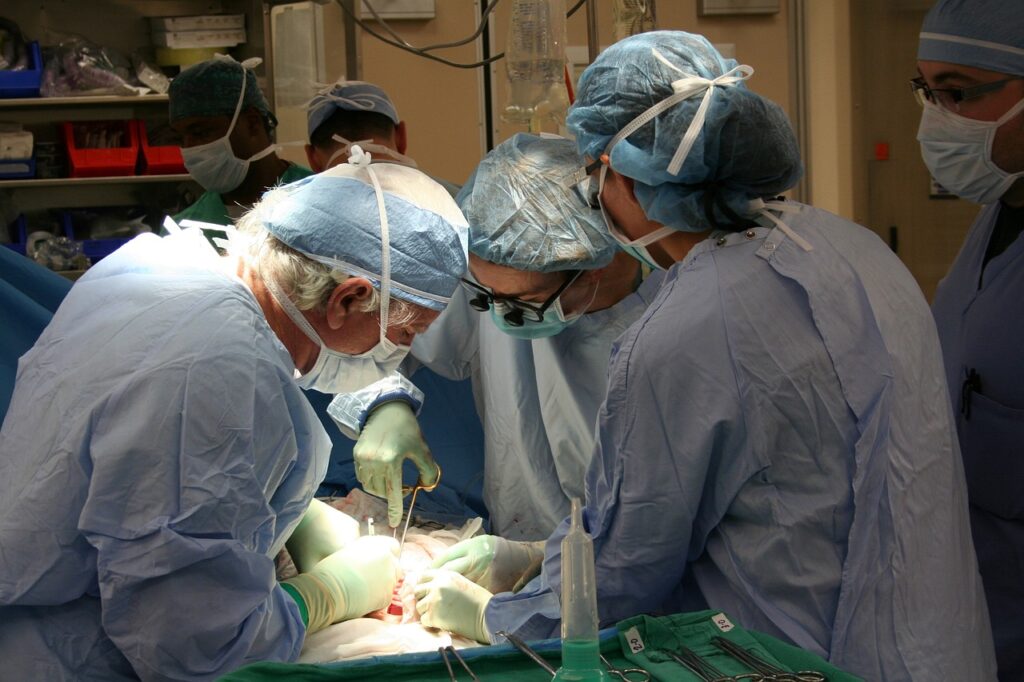Cardiac surgery is a highly specialized field within medicine that focuses on the treatment of heart conditions through surgical intervention. This branch of surgery is crucial for managing and correcting a wide range of heart-related issues, such as coronary artery disease, heart valve disorders, congenital heart defects, and heart failure. The primary goal of cardiac surgery is to restore the normal function of the heart, which may involve repairing, replacing, or bypassing damaged structures within the heart.
One of the most common and well-known cardiac surgeries is coronary artery bypass grafting (CABG). This procedure is often performed on patients with severe coronary artery disease, where the arteries supplying blood to the heart muscle become narrowed or blocked due to a buildup of plaque. During CABG, a surgeon creates a new pathway for blood to flow to the heart by grafting a healthy blood vessel, typically taken from the patient’s leg, arm, or chest, to bypass the blocked artery. This procedure can significantly reduce the risk of heart attack and improve the quality of life for patients with coronary artery disease.
Another critical area of cardiac surgery is the treatment of heart valve disorders. The heart has four valves—mitral, tricuspid, pulmonary, and aortic—that regulate blood flow through the heart’s chambers. When these valves become damaged or diseased, they may not open or close properly, leading to conditions such as stenosis (narrowing of the valve) or regurgitation (leaking of the valve). Depending on the severity of the condition, surgeons may perform heart valve repair, where the existing valve is preserved and restored, or heart valve replacement, where the damaged valve is replaced with a mechanical or biological prosthetic valve. These procedures are critical in ensuring that blood flows correctly through the heart and into the rest of the body, preventing complications such as heart failure or stroke.
In addition to CABG and valve surgeries, cardiac surgery also encompasses the treatment of congenital heart defects—abnormalities in the heart’s structure that are present at birth. These defects can vary widely in severity, from simple issues that may require only monitoring to complex conditions that necessitate immediate surgical intervention. Pediatric cardiac surgery is a specialized field within cardiac surgery that focuses on correcting these congenital defects in infants and children. Procedures may include repairing holes in the heart (such as atrial or ventricular septal defects), correcting abnormal blood vessels, or reconstructing heart chambers. Early intervention through surgery can often lead to significant improvements in the quality of life and long-term outcomes for children with congenital heart defects.
Heart failure, a condition where the heart cannot pump enough blood to meet the body’s needs, is another major area where cardiac surgery plays a vital role. In cases where heart failure is severe and unresponsive to medication or other treatments, surgical options such as ventricular assist devices (VADs) or heart transplantation may be considered. VADs are mechanical pumps that help the heart circulate blood, often used as a bridge to heart transplantation or as a long-term solution for patients who are not candidates for a transplant. Heart transplantation, although less common due to the limited availability of donor hearts, is a life-saving procedure for patients with end-stage heart failure.
The advancements in cardiac surgery over the past few decades have been remarkable, leading to improved survival rates and quality of life for patients. Innovations in surgical techniques, such as minimally invasive and robotic-assisted surgery, have reduced the risks associated with open-heart surgery and shortened recovery times. Additionally, the development of new technologies, such as transcatheter valve replacement, allows certain heart procedures to be performed without the need for traditional surgery, further reducing the invasiveness of treatment.
Despite the complexities and risks associated with cardiac surgery, the outcomes for patients undergoing these procedures have continued to improve, thanks to ongoing research, technological advancements, and the expertise of cardiac surgeons and healthcare teams. The field of cardiac surgery remains a critical component of modern medicine, offering hope and healing to patients with severe heart conditions.
Key Points on Cardiac Surgery
- Definition and Focus: Cardiac surgery is a specialized field focused on the surgical treatment of heart conditions to restore normal heart function. It addresses issues like coronary artery disease, valve disorders, congenital heart defects, and heart failure.
- Coronary Artery Bypass Grafting (CABG)
- CABG is one of the most common cardiac surgeries, primarily used to treat coronary artery disease.
- The procedure involves bypassing blocked arteries with grafts from healthy blood vessels, improving blood flow to the heart.
- CABG reduces the risk of heart attacks and enhances patients’ quality of life.
- Heart Valve Surgery:
- Heart valve surgery addresses conditions where heart valves are damaged, leading to improper blood flow.
- Procedures include valve repair (preserving and restoring the original valve) or valve replacement (using mechanical or biological prosthetics).
- These surgeries prevent complications like heart failure or stroke by ensuring proper blood flow through the heart.
- Congenital Heart Defects:
- Congenital heart defects are abnormalities present at birth, ranging from minor to life-threatening.
- Pediatric cardiac surgery is a subspecialty focused on correcting these defects in infants and children.
- Early surgical intervention can significantly improve long-term outcomes and quality of life for affected individuals.
- Heart Failure Management:
- In severe cases of heart failure, surgical options such as ventricular assist devices (VADs) or heart transplantation may be necessary.
- VADs support heart function by mechanically pumping blood, while heart transplantation replaces the failing heart with a donor heart.
- These surgeries are critical for patients with end-stage heart failure who do not respond to other treatments.
- Advancements in Cardiac Surgery:
- Technological innovations, including minimally invasive and robotic-assisted surgery, have reduced risks and recovery times.
- Transcatheter valve replacement is an emerging technique that allows valve surgery without traditional open-heart procedures.
- Ongoing research and advancements continue to improve patient outcomes.
- Importance of Cardiac Surgery:
- Cardiac surgery is vital for treating severe heart conditions, often providing life-saving interventions.
- Despite its complexity, the field has seen significant improvements in safety, effectiveness, and patient recovery.
- The expertise of cardiac surgeons and healthcare teams is crucial in delivering successful outcomes for patients.



